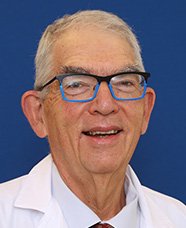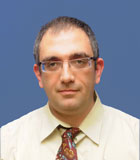Healthcare with Confidence
What Is T-Cell (T-Lymphoblastic) Lymphoma?
T-cell lymphoma is a rare and aggressive type of lymphoma that develops when T-lymphocytes — immune cells responsible for fighting infections — begin to grow and divide uncontrollably.
These abnormal cells do not function properly and gradually replace healthy immune cells, leading to the formation of tumors in various organs of the lymphatic system.
The disease may begin in the lymph nodes, thymus, spleen, intestine, or bone marrow. As it progresses, lymphoma cells can travel throughout the body via the lymphatic system, causing enlarged lymph nodes and potentially affecting other organs.
Lymphoma is one of the most common childhood cancers, accounting for about 20% of all pediatric oncological cases. In Israel, approximately 50 new cases of lymphoma are diagnosed in children each year.
The most frequent types are:
- Hodgkin’s lymphoma
- B-cell lymphoma
- T-cell lymphoma
Despite the seriousness of the diagnosis, Israeli oncology centers achieve very high cure rates, thanks to advanced diagnostic tools, multidisciplinary care, and international treatment protocols.
Leading Israeli Experts in Lymphoma and Hematology
Our partner network includes top hematologists and oncologists recognized both in Israel and internationally.
⇒ Consult with Top Lymhoma Specialist
You can receive a second opinion or consultation online before traveling to Israel.
Why Does T-Cell Lymphoma Develop?
In most cases, the exact cause is unknown.
T-cell lymphoma is not hereditary and usually has no proven link to environmental factors such as mobile phone use, power lines, diet, or pollution.
Some studies suggest that viral infections may play a role, but there is no clear scientific evidence yet.
Diagnosis in Israel
Israeli hospitals use state-of-the-art technologies to accurately confirm the diagnosis and determine the stage of the disease.
Diagnostic procedures may include:
- Blood tests – to evaluate blood cell levels and organ function.
- Biopsy – microscopic examination of tissue from an enlarged lymph node, often performed under CT guidance.
- PET-CT scan – identifies active tumor sites and determines the extent of the disease.
- Bone marrow test – samples taken under anesthesia from the pelvic bone to check whether cancer has spread.
All results are carefully reviewed by a multidisciplinary team of hematologists, oncologists, and pathologists, ensuring the most accurate treatment plan.
Treatment of T-Cell Lymphoma in Israel
T-cell lymphoma treatment is designed to eliminate all abnormal cells and prevent relapse. Because lymphoma involves rapidly dividing cells, therapy focuses on stopping this process.
Main treatment methods:
- Chemotherapy – the core of treatment. It destroys dividing cancer cells.
- Administered as pills, syrups, or intravenous infusions.
- In some cases, drugs are injected directly into the cerebrospinal fluid to protect the brain and spinal cord.
- This procedure is usually performed around 10–12 times during treatment.
- Radiotherapy – high-energy beams target remaining cancer cells. In children, it is used only when absolutely necessary to minimize side effects.
- Targeted and immunotherapy drugs – protocols in Israel increasingly use T-cell-specific immunotherapies and CAR-T cell therapy for resistant or relapsed cases.
- Bone marrow (stem cell) transplantation – recommended in select patients with aggressive or recurrent lymphoma.
Duration of Treatment
Treatment typically lasts up to two years, divided into phases:
- Induction Phase (first 6–7 months):
Intensive chemotherapy with frequent hospital visits, sometimes requiring short inpatient stays. - Maintenance Phase (up to 18 months):
Less intensive therapy with outpatient visits once every 1–2 weeks.
The exact schedule is tailored individually for each patient by the treating team.
Results and Prognosis
Thanks to the latest advances in Israeli hematology and oncology, most children and adults with T-cell lymphoma achieve complete remission.
However, regular follow-up is essential, as recurrence may occur even several years later.
Patients are usually monitored for at least five years after diagnosis.







